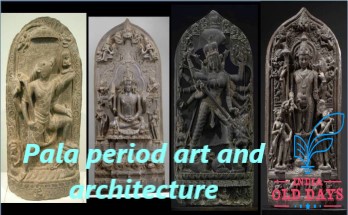Feudal System
5th Century At the end of, we find the use of the word Samanta in the Pallava inscription of the period of Shantivarman (455-470 AD) for the subordinate (Samantachudamaniyah) in South India.
What was the meaning of feudal system, and when did feudalism emerge in India?
5th capacity In the last decades of the term, the term has been used for subordinates in some charities in the south and west. In North India, its earliest use is found in the equivalent of the Bengal inscription and the mountain cave inscription equivalent to the Mukhari chief Anantavarman (early sixth century). In which his father is described as a Samantchudamani of the Guptas. The next important mention is made of subduing the Mandsaur Pillar of Yashodharaman (525-535 AD). As mentioned, 6 V. century. and in the 7th century, the ruler of Vallabhi assumed the title of Mahasamant or Samanta Maharaja. Gradually, it started being used for the imperial officers from the defeated kings. For example, feudal and king were used in place of Kalachuri. Later, the terms Samantamaharaja and Mahasamant were used for state officials in the land donations of Harsh.
Literary source
Baan mentions many types of feudatories in his Harshcharit. Of these, the feudal was the smallest ordinary subordinate. The Mahasamanta was naturally one rank above the feudal lord. Shatru Mahasamant used to be a defeated enemy king. Those who voluntarily became subordinates were called Uptsamant. Pradhansamant was the king’s most trusted confidant, and he certainly accepted his advice. The protagonist was probably a feudal lord opposing the king, but this cannot be said with confidence. The enchanted Mahasamant, whom the Baan refers to only once, used to be particularly feudal.
Feudal works
How the system works
The first mention of the feudal lord’s duty of Baan towards his master. It is clear from his Harshcharit that his first job was to give an annual look. We are told that Harsh had made his great friends miserable. From the area published by the feudal kings, the annual tax was derived from the feudal places in place of the subjects. Although it is not clear whether these feudatories could have changed the number or nature of taxes, He was responsible for the collection of royal taxes in his territory.
According to Baan, the second task of the feudal lords was to present themselves before the king and pay respect. He says that the defeated Mahasamanta used to remove his crown and turban (Shekhar or Molly) to show respect to the victorious emperor. It seems that in the court of Harsh, he had to face many types of insults. Some fans used to wave, some kept a sword on their neck, begging for their lives, and some were always ready to salute the king. Baan describes four ways (pranam-agaman) of saluting by the defeated kings in their Kadambari. These included bowing the head, bowing the head and touching the feet of the king, bowing the head and taking the feet of the king and finally placing his head on the king’s feet. Again in the same book, Bana mentions three types of service (paricharike–karan) performed by the defeated kings. They used to caught Chauri in the court of harsh, He used to work as the gatekeeper of the court and the person who did the Jayoghoshna.
According to Baan, the third task of the defeated feudal lord was to present the minor prince or son to the king. They were trained in the royal tradition, so that they would later become loyal. But the baan specifically mentions the work done by the defeated enemy-Mahasamant, Who had to do many things for their master.
Usually an important function of the feudal forces was to provide military assistance to their masters. The Baan in Harshacharita tell us that Harsh’s army was made up of the soldiers provided by kings and feudatories and their number was so much, that Harsh was also surprised to see him. Probably his army was based on the feudal system, which was collected only when needed. This view is supported by the Aihole inscription of Pulakeshin, which describes Harsh with his army of feudatories.
It seems that the feudatories living in the court of their master had to do many social works as well. According to Kadambari, he had to gamble, play the flute, make a portrait of the king, sort out the knots and perform other tasks. It is said in Harshacharit, that the wives of the feudal lords had to go to the court in festivities. Therefore, the feudal was connected with his master in economic and military matters as well as administratively and socially.
Reference : https://www.indiaolddays.com




